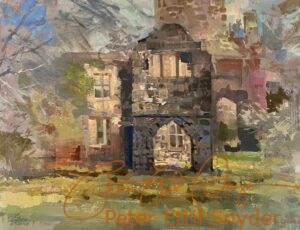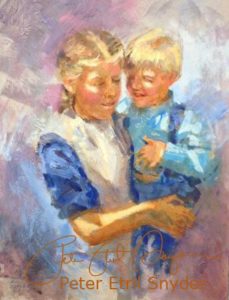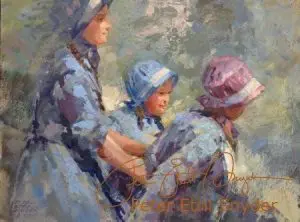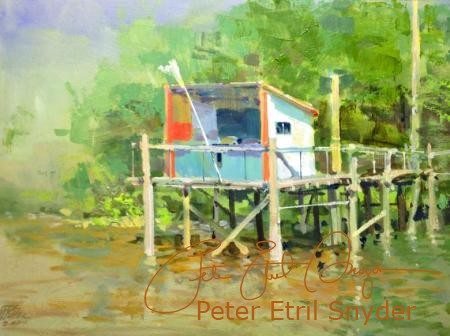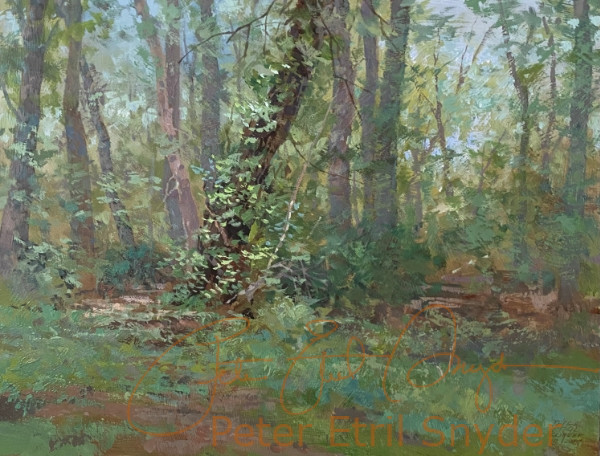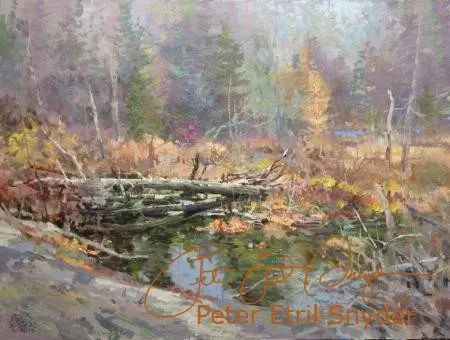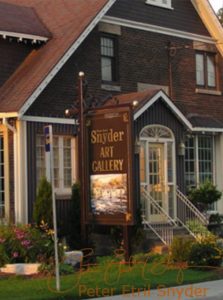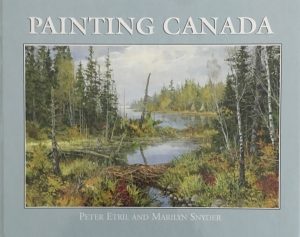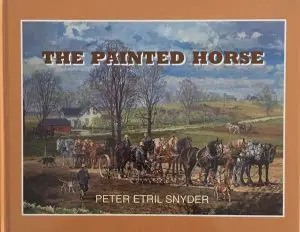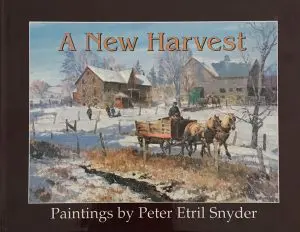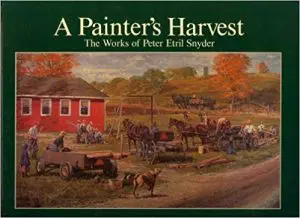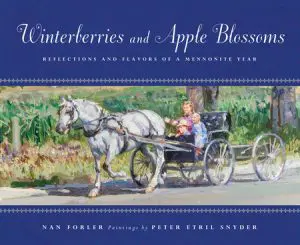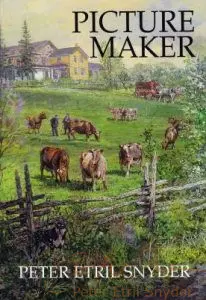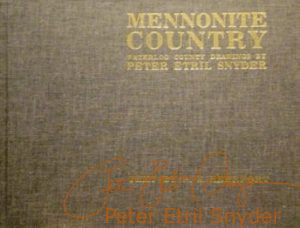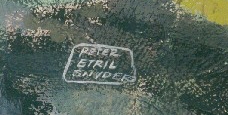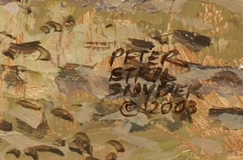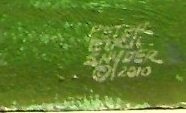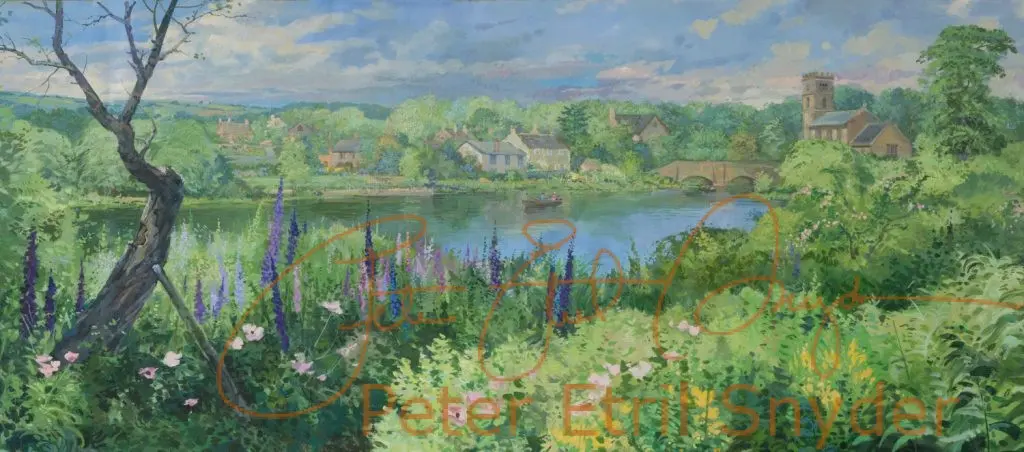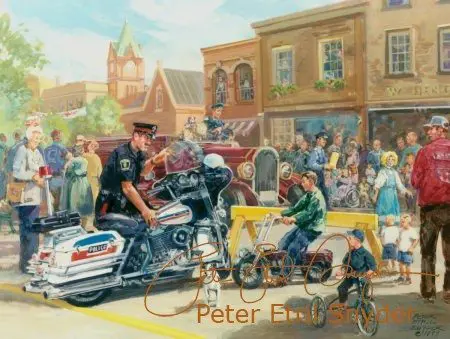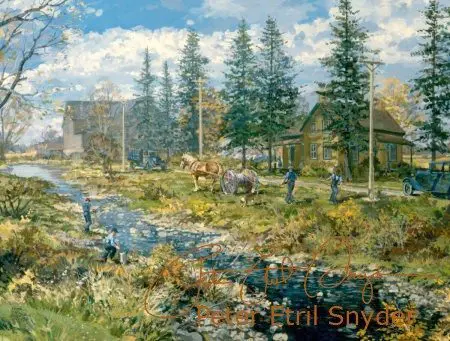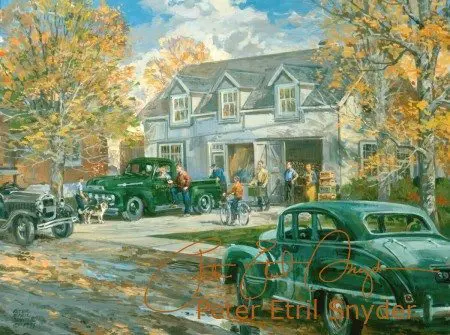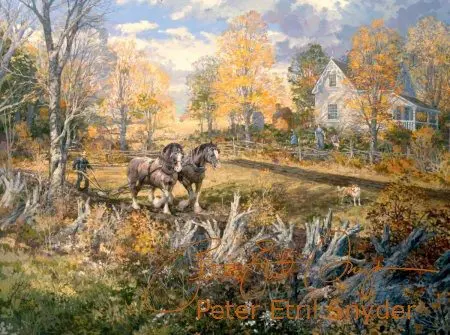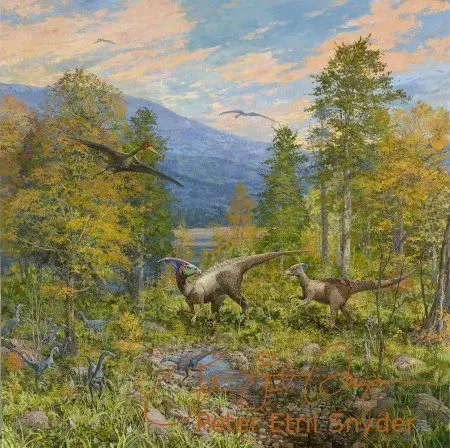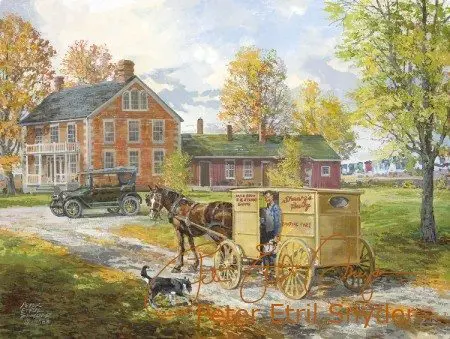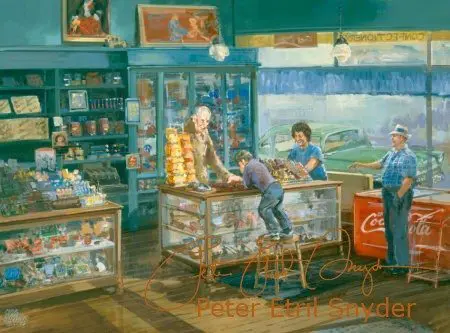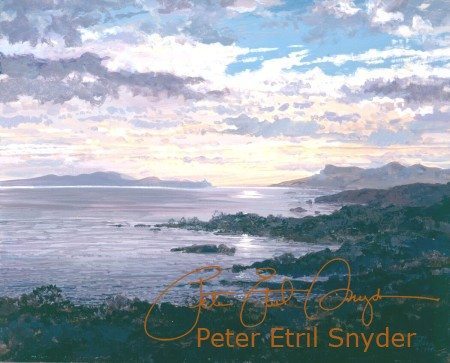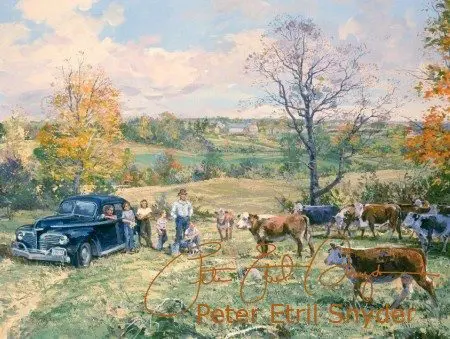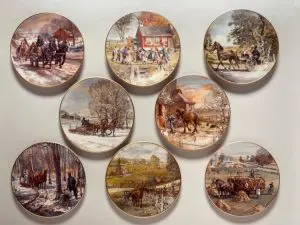*Years ago my uncle wrote this article showing how he developed a painting. I wanted to include it here in the archives as a research tool.
Bordeaux Morning … How I arrived at the finished version
Step 1 As always, when I start a painting, I tried to establish the big shapes of light and dark, warm and cool. These are almost stained in using a 2 inch brush. I use no drawing. Patches of colour interest me, not lines.
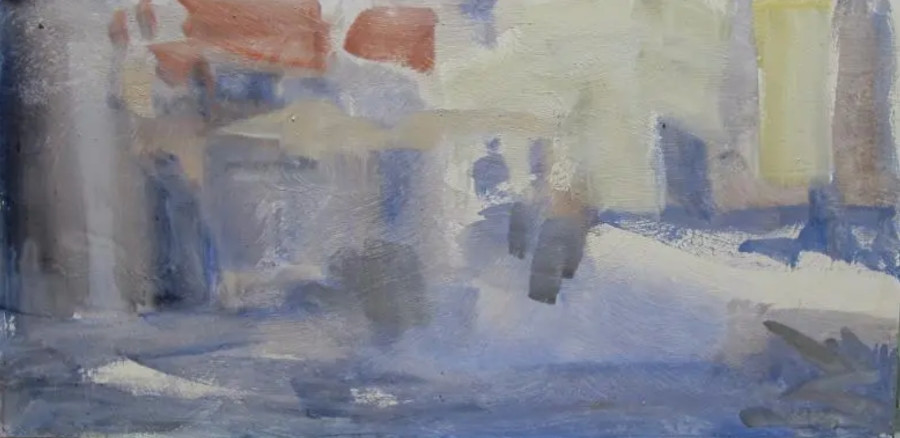
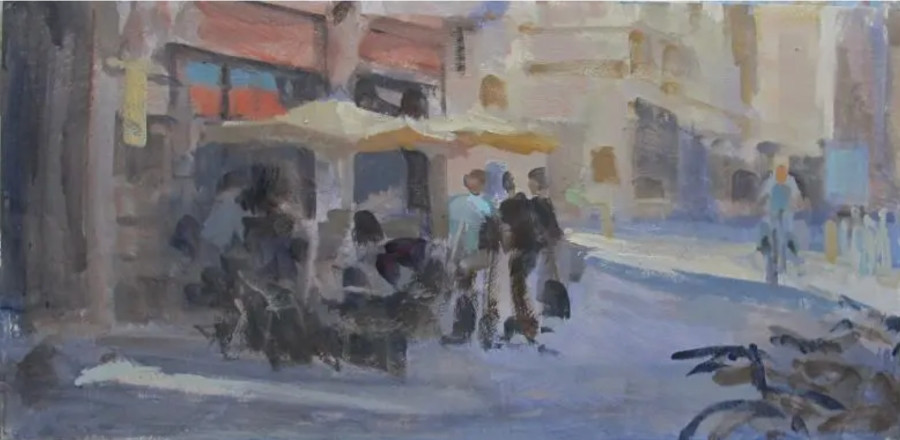
Step 2 Breaking into smaller shapes, establishing better values and putting more power into the darks. I am always working all over the painting trying to keep the focus even.
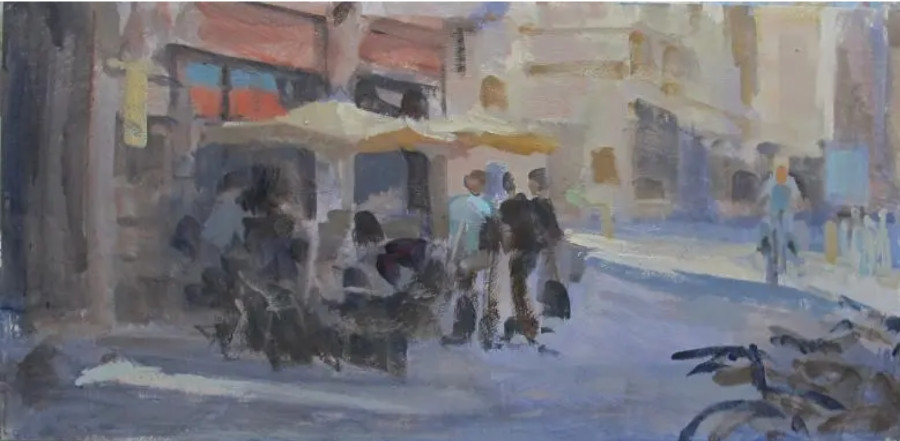
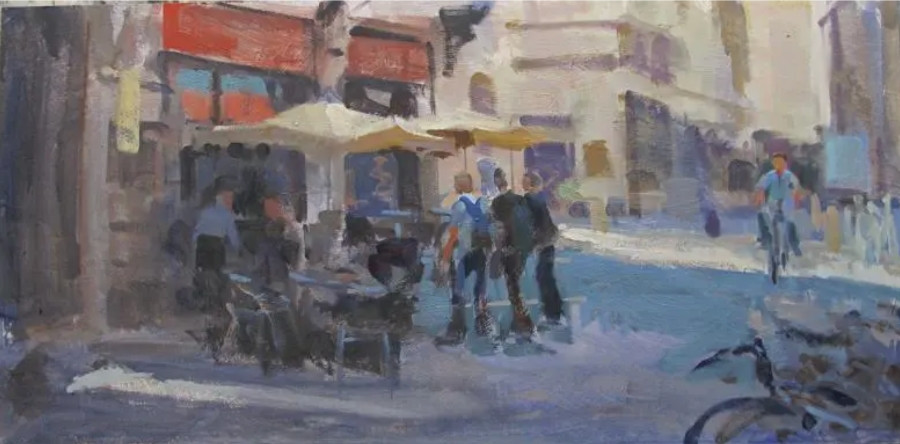
Step 3 Moving in to establish the figures and also reinforce the contrast between the dark figures and the lighter background. Realizing as I go that this scene is more complex than I first imagined, I start to come to grips with the fact that although the sunlight is coming from the left, the reflected light is coming from the right. Just a heads up to myself.
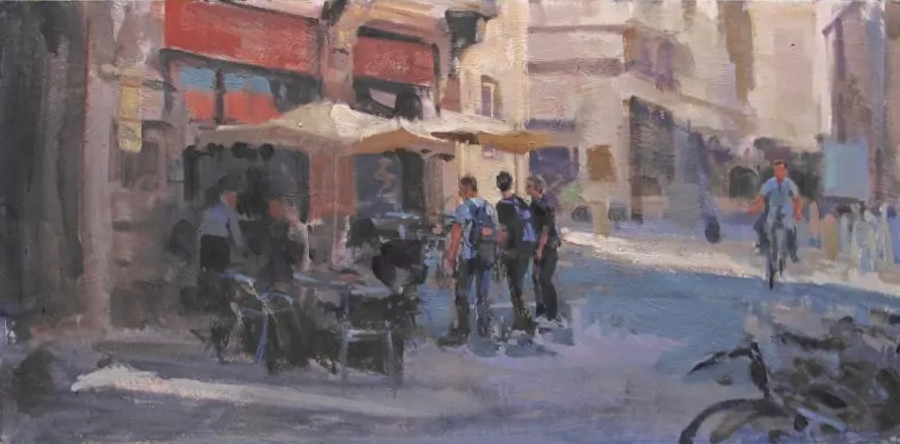
Step 4 As I refine the figures I start to have doubts about the tangle of bicycles in the front right. Will that become to dominant?????? Leaving the bikes I look to smaller pieces, shapes in the building.
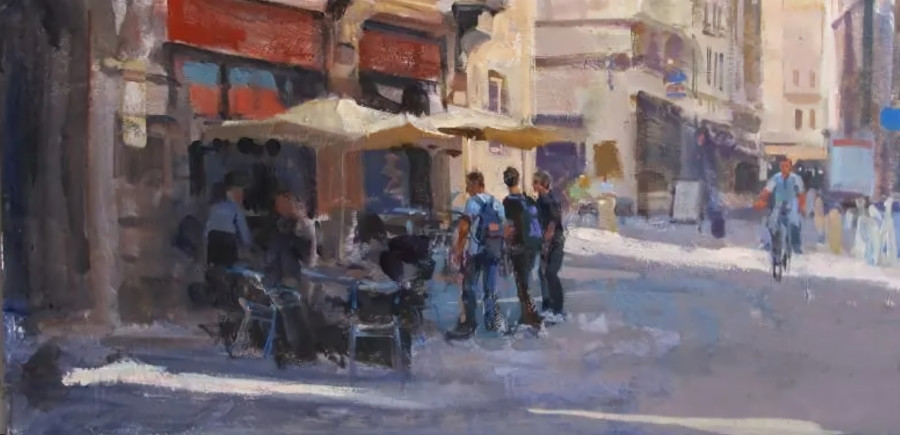
Step 5 I decide to paint out the bicycles in the front. To compensate in the design I introduce a slash of light to the right-hand corner. I hope that it will work. More attention to the tables and chairs is applied. In my attempt to create a strong shadow where the bike is, I fear that I have over egged the custard, so I back that off a bit. Windows are added to the far buildings.
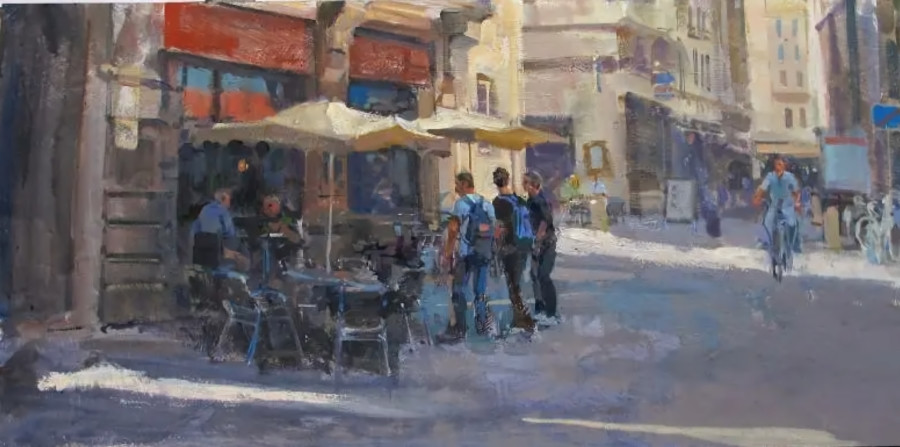
Step 6 General refinement to the buildings at rear as well as to the left corner of the front building. An unease is starting as I wonder if I have enough human activity in the back. I don’t want this piece to become all about the three people in the front.
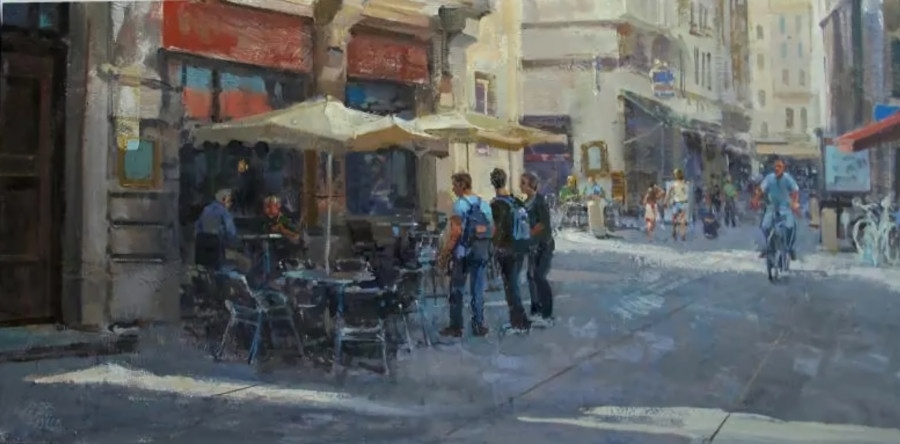
Step 7 A general tidying up is in order. The fellow on the bike gets some attention as well as the couple at the table in the mid-distance. I added several more figures to draw the eye back into the picture. The chairs and tables get more description. I add the doors at the extreme left to pull the eye forward but not draw much attention. Bits and pieces, such as the red awning on the extreme right, find their way into the piece.
I believe the painting is done but I am always a bit uneasy fearing that I have gone over the top or perhaps have not cleared the jump. I find the process scary and exciting.

